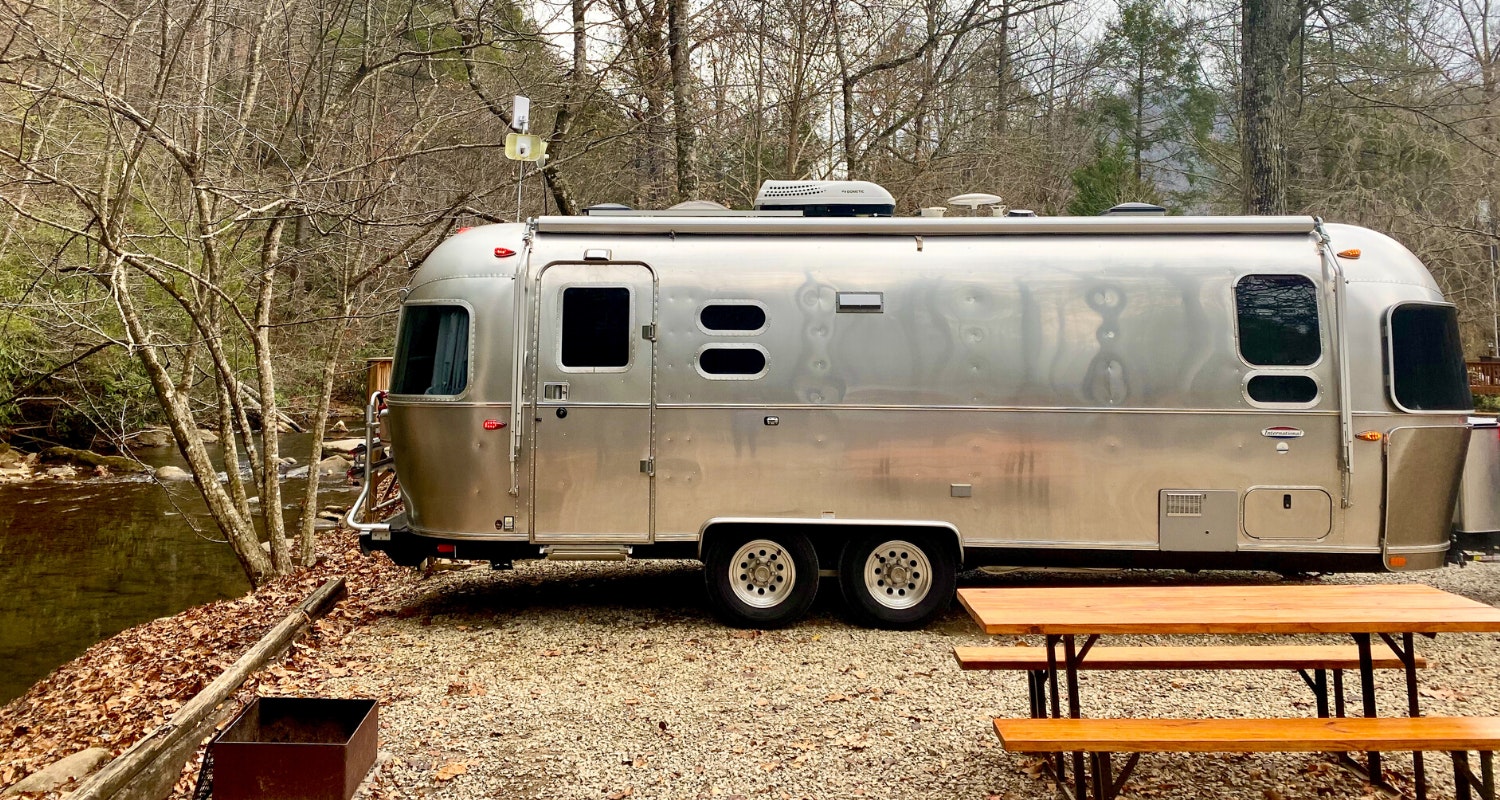What You Need To Know Before Your First RV Camping Trip
This past fall we channeled our inner Cousin Eddie and purchased our first RV. A couple weeks later was our first time RV camping … EVER. We researched and read manuals, but there is still a pretty steep learning curve. We made quite a few mistakes during our first camping trip, but we figured it out and had an amazing time. If you’re thinking of taking your family on an RV camping trip, here are a few things to keep in mind while planning.
Picking Your Campsite
There are so many different campsite options available. Choosing one that fits you and your family’s needs really depends on what you’re looking for. We enjoy the safety blanket of campsites with full hookups. This means there are connections for power, fresh water and sewage. Not all campgrounds offer full hookups and some campsites offer different hookups within the same campground so make sure that you know what you’re reserving when you do.
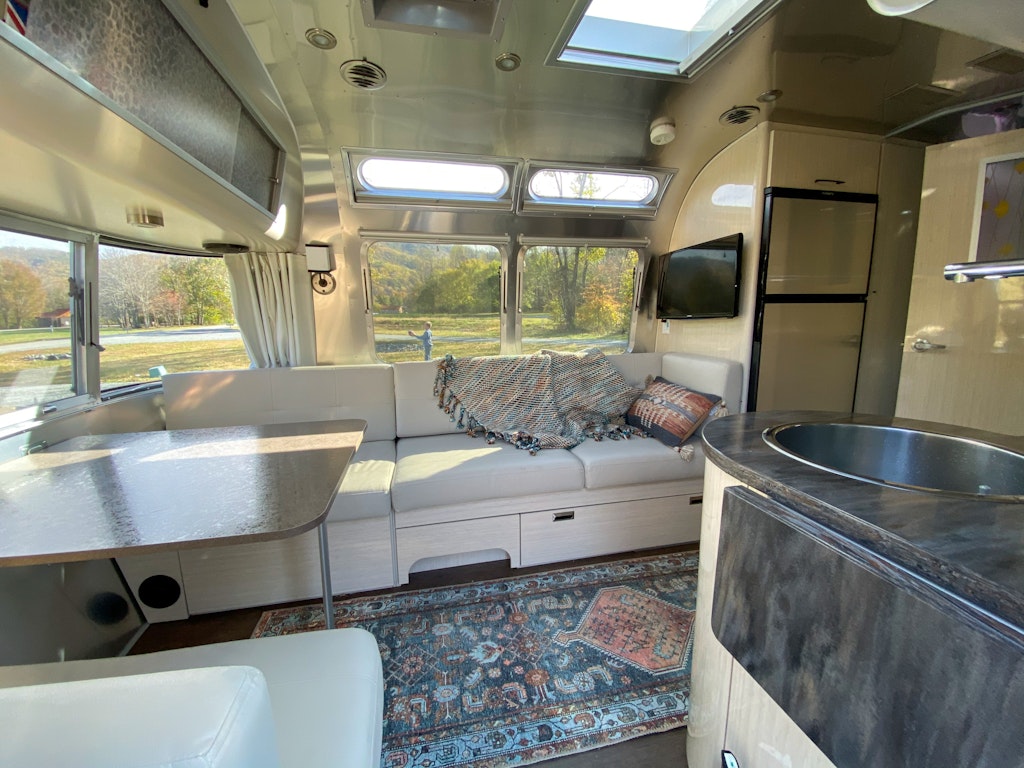
We’ve found reading reviews helpful, but have still surprised us in certain cases. You never know what the people reviewing are looking for. Look for pictures on the campsite’s website or search on instagram for tags at that campsite location to get a better idea of the surroundings. Try to get an idea of the layout of the campground, how large the campsites are etc.
Byrd’s Campground in Elkin, NC offered an amazing mix of everything we were looking for. Our campsite backed up to this creek and wooded area where the kids could run around and explore while we started on dinner. It was close to multiple different types of hiking trails that were within walking distance of the actual campground.
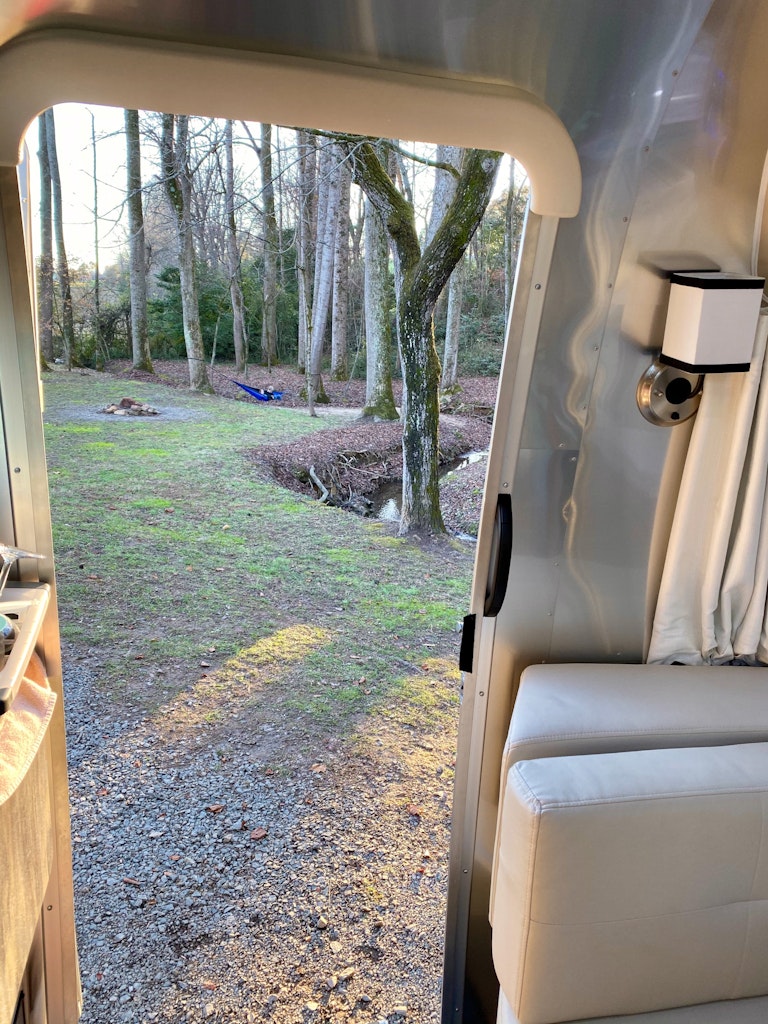
They also had this amazingly gorgeous trail through the trees to a winery. This is definitely on our list to visit again.
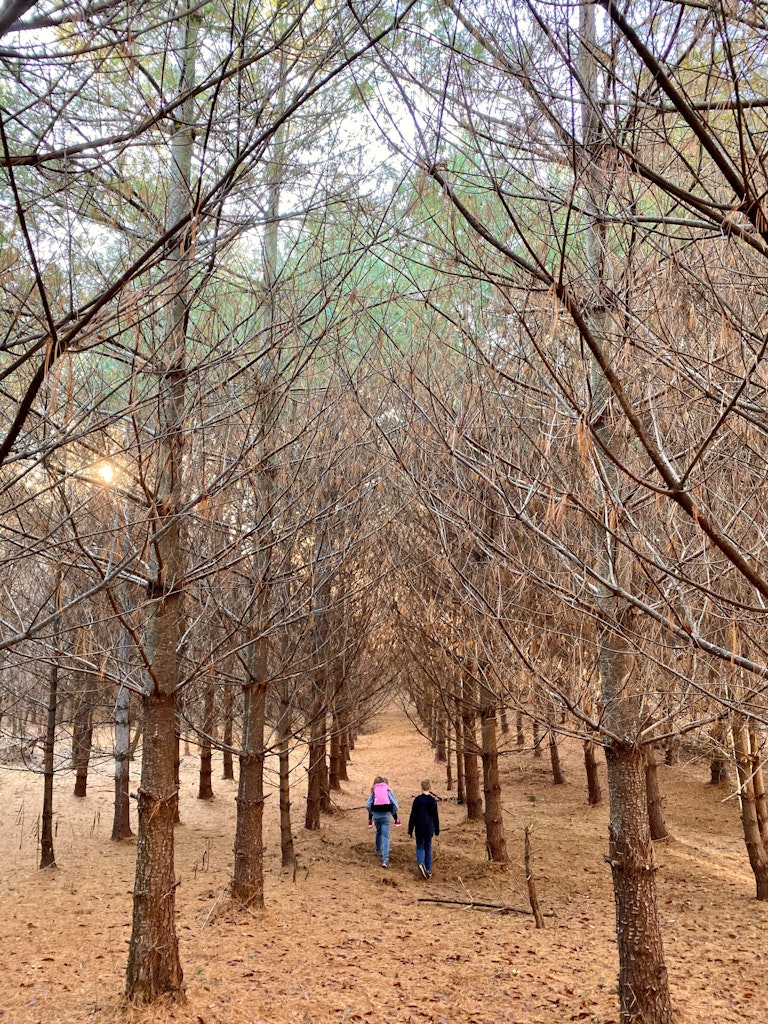
Make sure you check whether or not the campground has a strong cell signal or wifi available. Some people may love disconnecting, but being newbies and needing a signal to telecommute a little we required a cell signal and/or WiFi.
National or State Park campgrounds are also great places to try out. Camping reservation fees are usually less expensive and campsites are sometimes a little larger. Of course it all depends on the campground. We have had our sights on Bahia Honda Campground in the Florida Keys for months now, but it is really difficult to snag a reservation. If you can plan in advance, check the cancellation policy.
Plan Meals Out Before You Leave
If you can, try to at least vaguely have an idea of the different meals you’ll be fixing while camping. If you have time to do some of the prep work at home you’ll definitely be patting your self on the back and giving yourself a high five later. It’s much easier to snag the spices you’ll need or condiments from your fridge then to be standing in the supermarket in route trying to figure out meals for the next few days. We found paper plates and those disposable aluminum baking dishes to be really helpful when cooking, serving etc. You really don’t have room for serving dishes in an RV.
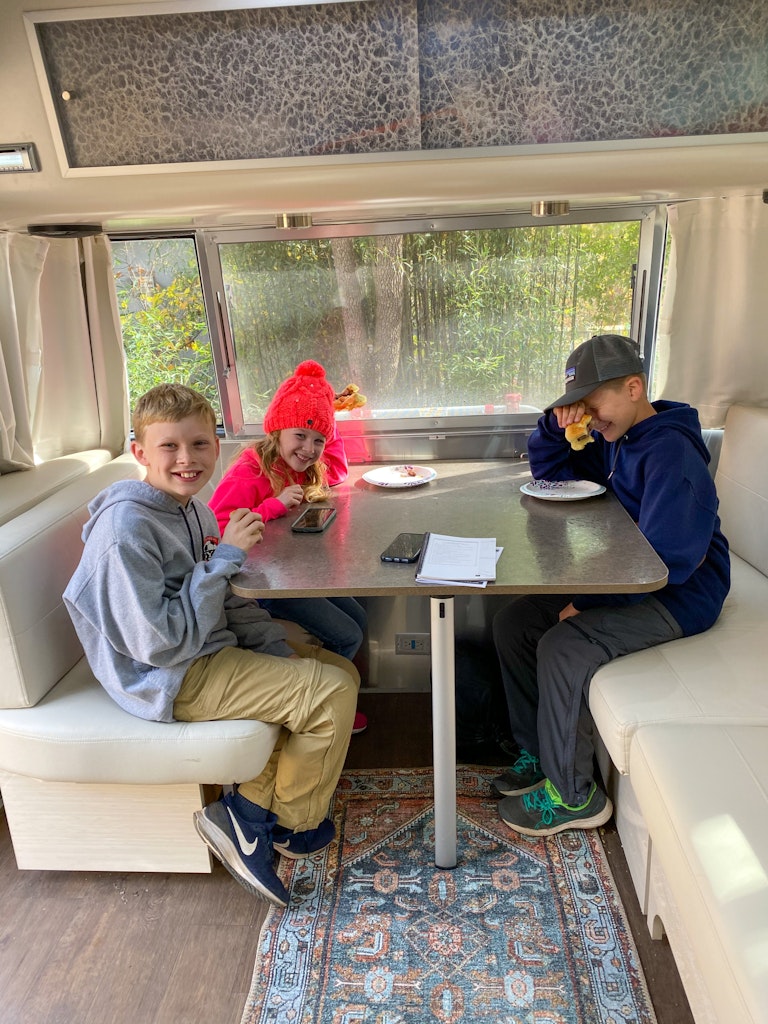
As far as drinking water goes, we bring a Brita pitcher with us and use reusable water bottles. We also have a water filter on our fresh water hose, but after winterizing and dewinterizing the RV a couple times, we’ve just gotten in the habit of bringing the Brita pitcher.
Packing & Organizing
As you can imagine, space in an RV is quite limited. Trying to stay organized while camping can be a challenge, but we have a few things that we’ve found that have helped us. Our most used packing essential whether we’re driving, camping, flying are our ebags packing cubes. Trying to store clothes for 5 people, things are going to shift around. Each person gets a different color set of packing cubes. So we can shift around the cubes to repack them and not mix up everyone’s clothes.
Make sure you have room to store bedding when not in use. We use sleeping bags and travel pillows for the kids when we are in the RV. Each morning we pack them back up and store them in their specific spot, so having enough room to do that is key.
Laundry baskets and bins have also come in handy. We have a few laundry baskets that fit perfectly under our bed to hold things like shoes, dirty clothes etc. Things like markers or craft supplies and small games we store in small plastic bins to keep them from shifting all around.
Dirty laundry piles up quick with 5 people. These fabric laundry bags have been great. We bring them with us wherever we travel. Just throw them in with a load at the laundromat and you’re ready for the next round of dirty clothes.
Another thing we didn’t realize would be an issue was figuring out where to hang 5 bath towels to dry. I actually ended up sewing a little loop of ribbon on each of so they’ll stay up on the hooks better and not fall off so easily.
Creating a checklist for packing is super helpful. There are things i was so proud of myself for remembering the first time that i completely forgot the next trip. Gah. Following a checklist would have been pretty helpful.
Check The Weather
Pay close attention to road conditions and temperature fluctuations. If you’re camping in the colder months make sure that you have a plan for when temperatures dip down below freezing. If rain is in the forecast, you might want to pack an extra pair of shoes, some old towels, maybe even a boot dryer.
Plan & Check Your Route
Once you’ve figured out where you’re headed, plan out your route to get there. Find a grocery store or super Walmart along the way to load up on groceries and stock your fridge for the next few days. Check to make sure there aren’t any tunnels with height limitations or super windy roads. Most reviews on the campsites will warn you if there is a route you should avoid. You might want to keep a printed map of the area in case you loose cell signal.
Make sure you know where the next gas station is with lots of wiggle room. We usually try to stop at an exit with a few different gas stations then choose the one that appears to be the easiest to get in and out of while towing our large tin can.
Check Tire Pressure Before Your RV Camping Trip
Check tire pressure in your RV’s tires and also your tow vehicle’s tires. We made the mistake of not checking the tow vehicle’s tire pressure before heading off on the trip and spent the first hour trying to find a gas station that had a working air pump and we could maneuver close enough to it while towing the RV. This would have been a lot easier if we had done that before connecting to the RV. Learning curve ya’ll.
Plan On Extra Travel Time
One thing we really did not realize was how much longer it takes to get from point A to point B while towing an RV. Again we are newbies so we are much more cautious drivers while towing and we tended to drive slower than we usually do when we aren’t towing. We also had to stop for gas more often. Our gas mileage while towing was not stellar at about 8.5 miles per gallon so we had to stop to refuel about every 2 and 1/2 hours. This might not be the case for you depending on your tow vehicle and the RV you’re driving or towing, but it was a little surprising to us.
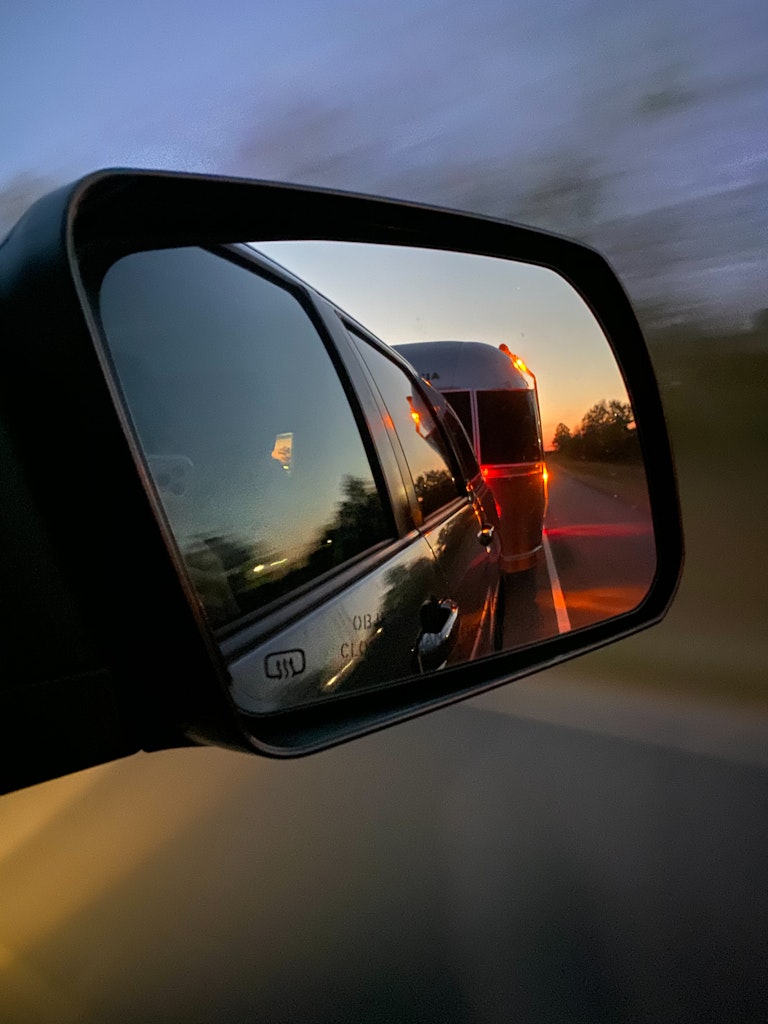
Arrive At The Campsite Before Dark
This is actually a rule at some campgrounds so keep this in mind when making your plans. Luckily it was not a rule at the first campsite we pulled into, but it would have been a lot easier to set everything up in the daylight. We pulled in right after dark and was greeted by our new campground neighbor. We admitted to being complete newbies and asked him for some advice. He laughed and said “for starters, don’t arrive after dark”. Man was he right. We were unfamiliar with how to set up the RV and trying to figure it out in the dark made it a lot more difficult.
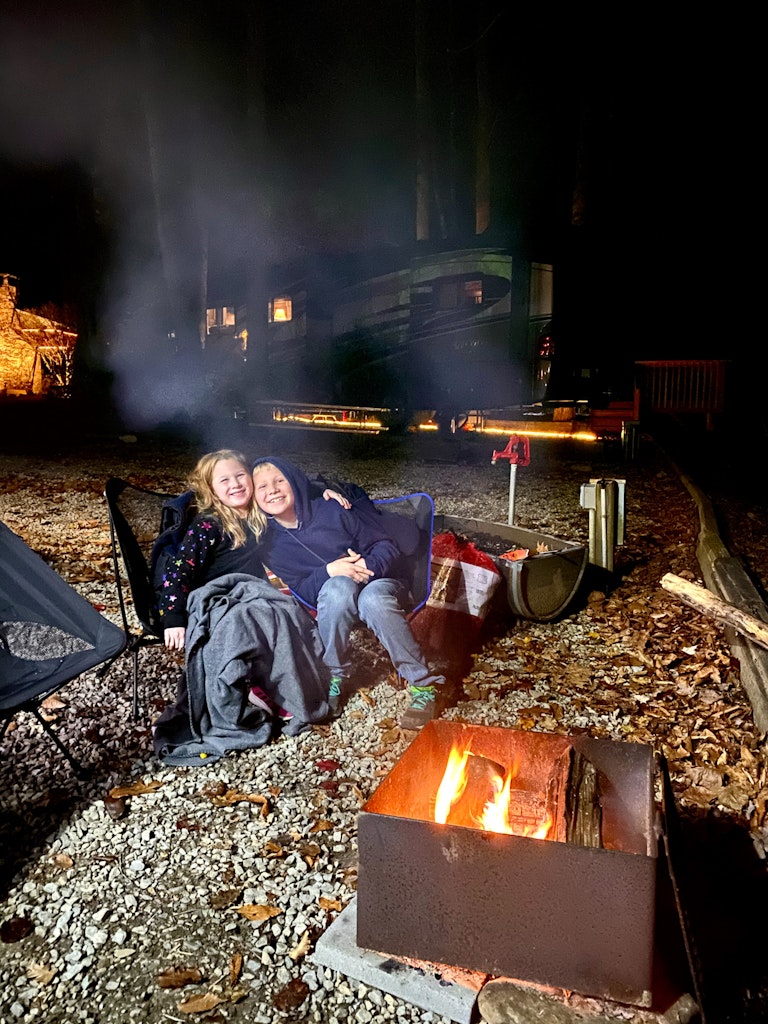
Be Mindful Of Your Tanks
I’m not going to lie, this is the part of RVing that scared me the most ya’ll. The tanks. If you’re new to RVing, let me give you the rundown. There are three tanks on your RV. The fresh water tank holds all of your clean water for drinking, showering, toilet flushing, sink running. The gray water tank holds all of the water that goes down the drain in the sinks and shower. The infamous black tank holds the sewage from the toilet. Cue scene of Cousin Eddie emptying the black tank on Christmas. HA.
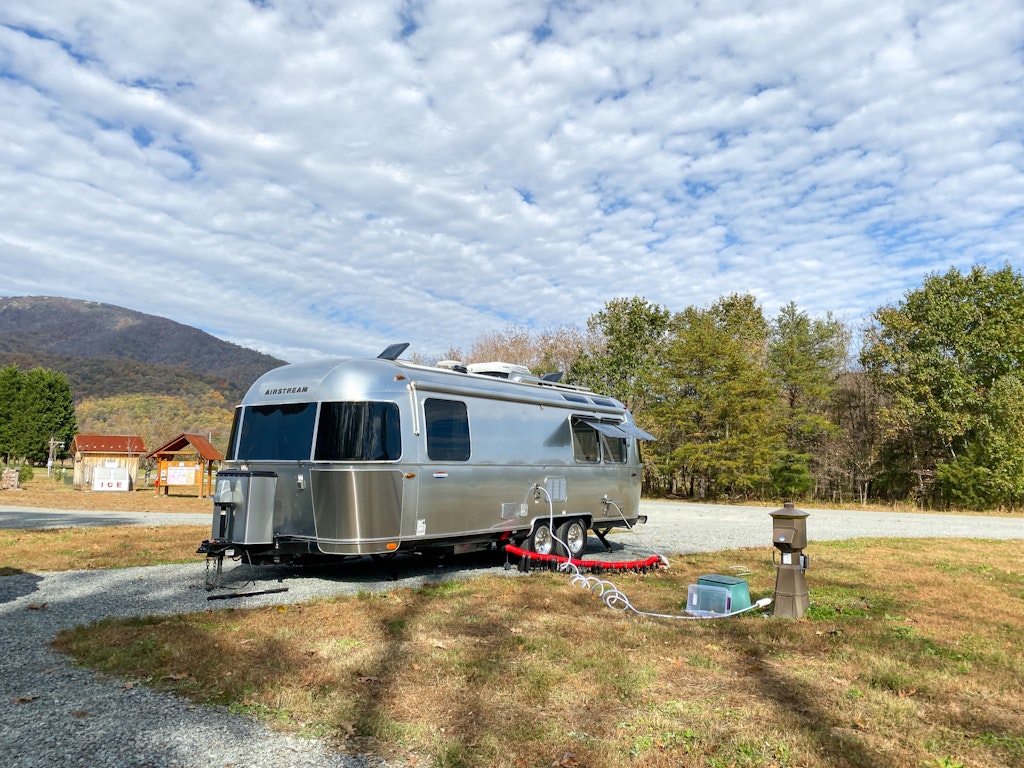
On our RV all of the hookups are located on the same side, which i believe is pretty standard and most campsites are set up for you to easily pull in and have space to hookup without much trouble. We did however run into a problem at one campsite where the hookups were closer to the back of the campsite and our sewer hose was not long enough to reach. LUCKILY the campground store sold extensions and we were able to empty the tanks the next morning. Our gray tank fills up way faster than our black tank does. With 5 people showering, washing hands, and doing dishes we usually need to empty out the gray tank once a day.
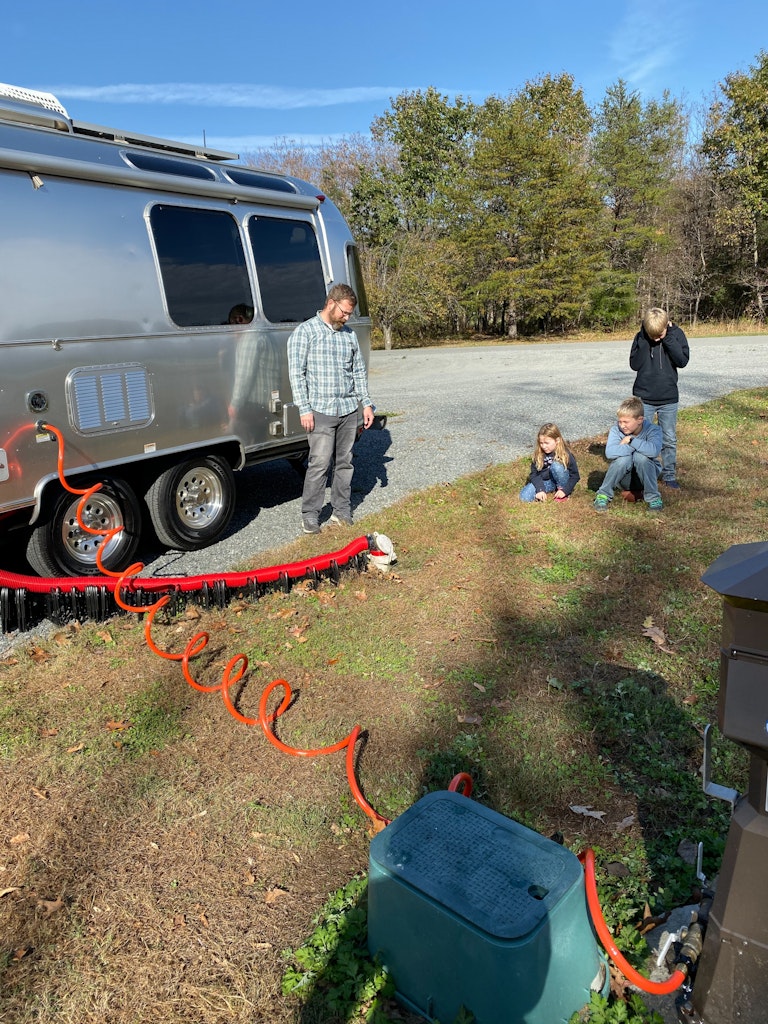
If you’re packing up to head home or moving RV campsites and emptying your tanks you need to do that in the right order. You empty the black tank first. Then you empty out the gray tank second. This helps to clean out your sewage hose or “poop snake” hahah.
The orange skinny hose in the photo above is our hose we use for flushing out the tanks. We don’t use the same hose as our fresh water hose just in case there is any backwashing, splashing etc. I’m not sure if this is a standard feature on RVs but ours has it.
We always like to leave some fresh water in the water tank when traveling. This allows us to use the bathroom in the RV.
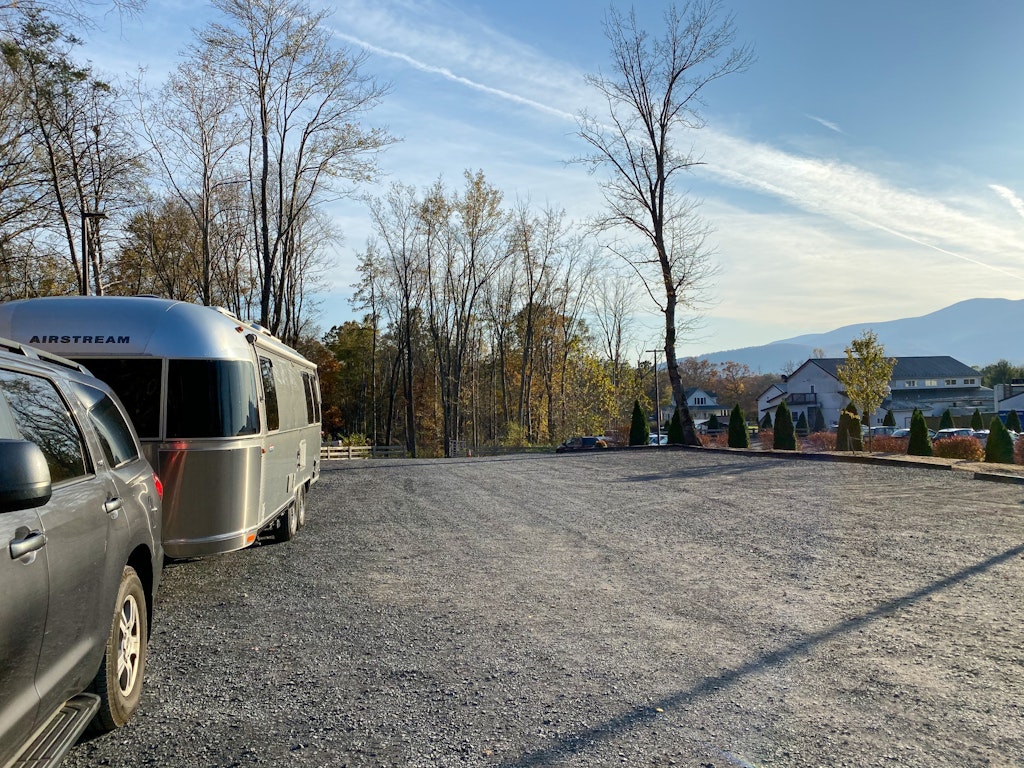
Making Checklists To Follow For Arriving & Departing
Our RV came with a book that has been so helpful! It’s called The Newbies Guide To Airstreaming. I’m sure there are similar books for other RVs as well or RVing in general. The most helpful thing in the book honestly are the checklists. There is a checklist for Arrival and setting up the campsite. A checklist for departure and what to check on the inside of the RV before you leave. And in my opinion the most important, a checklist for what to do and check when departing the campsite. It is so easy to skip a step when you’re rushing to not remember to raise up your levelers or forget to close up your sewer cap. This is an easy way to make sure you have everything ready to go before you hit the road again.
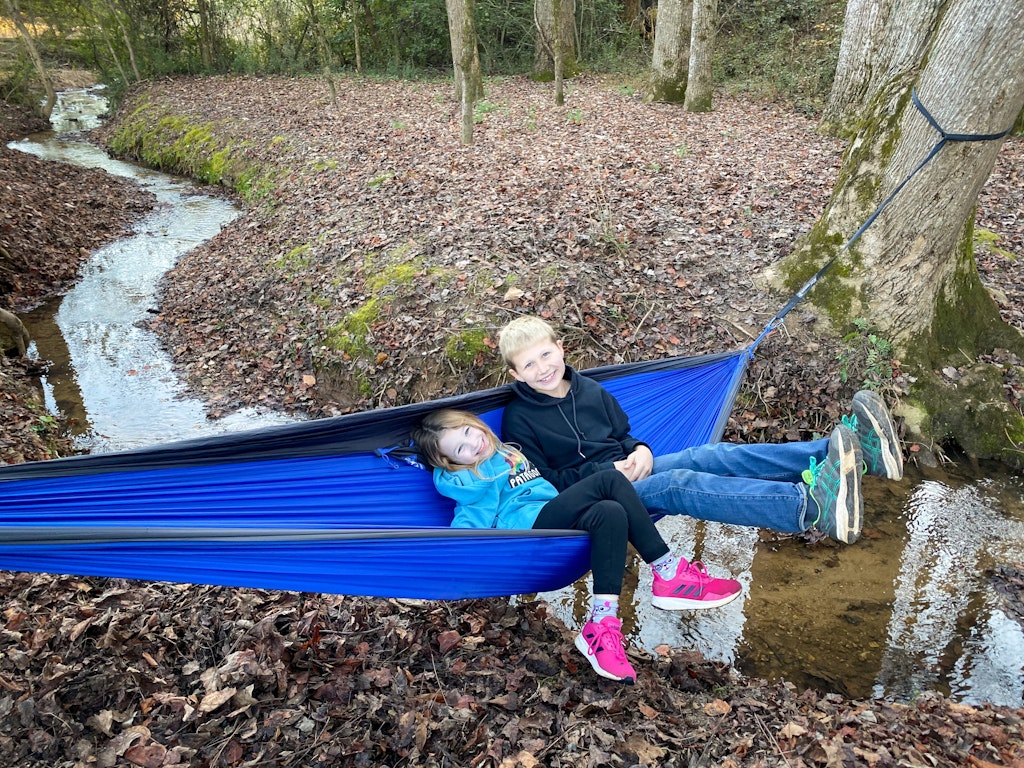
Slow Down And Have Fun
One piece of advice that we have really held on to is to sloooowww down. Mistakes are most commonly made when you’re rushing. Build in extra time to the schedule to comfortably arrive with enough time to set up. Start cleaning up the campsite early so you’re not rushing to get on the road. If you aren’t sure you can swing the turn into the gas station drive farther and turn when you feel comfortable.
And most importantly have fun. I am going to honestly say that I did not think that I would enjoy RV life as much as I do. Even when the hot water heater broke and we were showering in icy cold water, we made the best of it and had a blast. In the short time that we’ve been camping in our RV, we’ve already been on so many adventures that we would have never done without our tiny tin can home.
For ideas on what to pack for the road trip, check out our post on packing tips for a family road trip.

